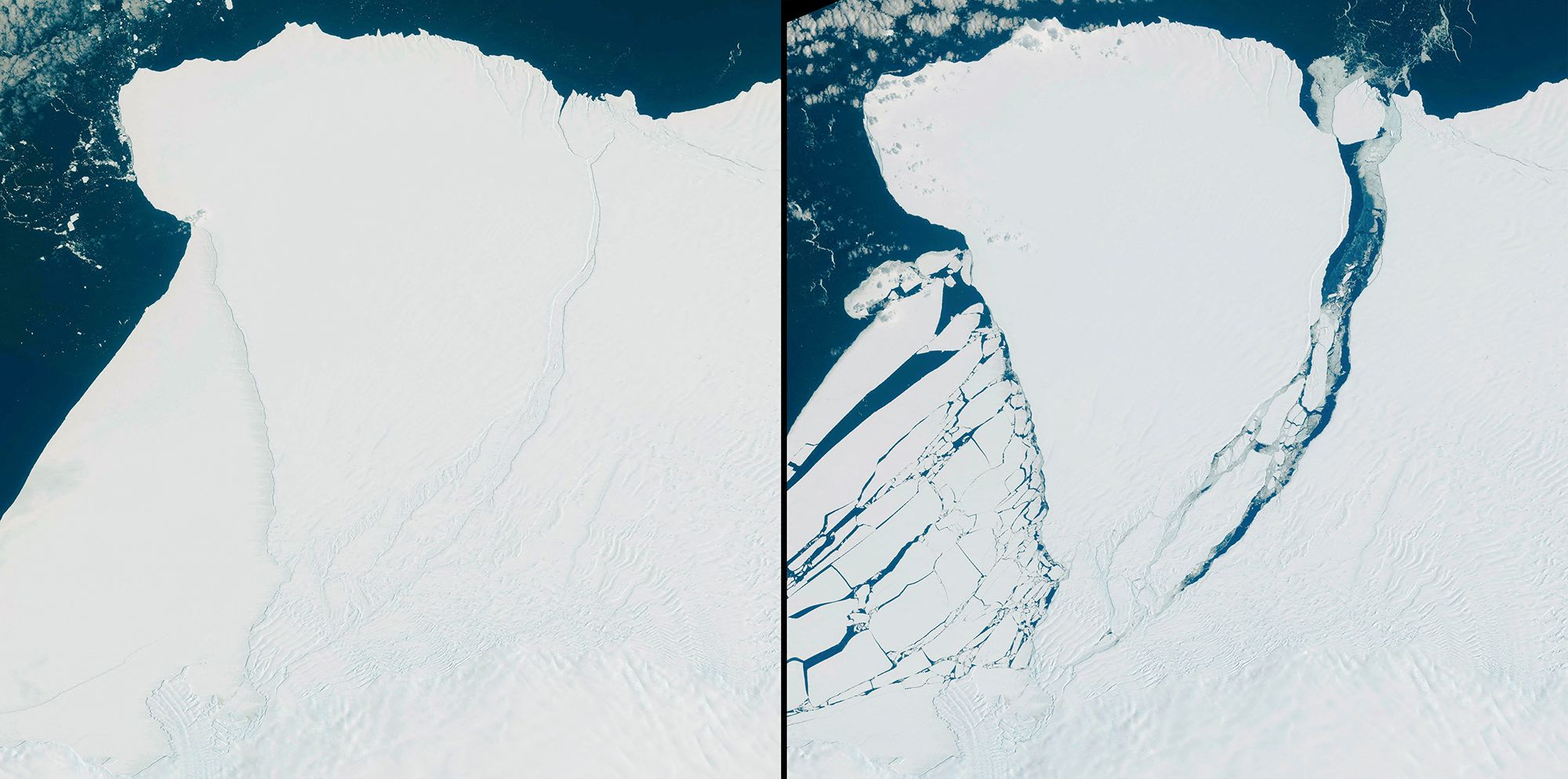Serious talk about climate change arises after an iceberg the size of London broke off in the arctic. PHOTO CREDIT: CNN
An iceberg roughly the size of London broke off of Antarctica due to warming air temperatures and early ice melt, according to a CNN article.
The break occurred on Sunday, Jan. 22, following years of “a roller-coaster of sea ice extent,” according to CNN. Now detached from Antarctica’s Brunt Ice Shelf, an area of glaciers along the continent’s coastline, the new iceberg is around 580 square miles, or 1,500 square kilometers.
Scientists and operational teams from the British Atlantic Survey have been monitoring the Brunt Ice Shelf’s behavior and expected the calving event, according to CNN. While Antarctica typically experiences a general decline in sea ice this time of year, a scientist at the National Snow and Ice Data Center told CNN that it has been “unusually rapid.”
This trend of warmer-than-normal air and water temperatures in Antarctica mirrors climate change impacts around the world. Long seasonal droughts, early snowmelt, sea level rise and increased wildfires impact more than just our environment, according to the University of Rhode Island’s Chair of the Department of Natural Resources Science, Peter Paton.
Floods, vegetation changes and warming temperatures threaten endangered species from the Saltmarsh Sharp-tailed sparrow in Rhode Island to the Jemez Mountains and Sacramento Mountain salamanders in New Mexico, according to Paton.
The Saltmarsh sparrows nest in certain vegetation within salt marshes, and with sea level rise due to ice melt, their habitats become submerged in water, according to Paton. Current projection models predict that the species might be extinct by the year 2050.
Since global warming and climate change are not issues that can be solved at a University-level, Paton explained that faculty members in his department are doing work to restore vegetation structure and maintain suitable habitats for impacted species.
“Right now, we’re just trying to figure out what specific impacts climate change is having on wildlife species,” Paton said. “As humans, our role is just figuring out what those impacts are, and coming up with strategies to help mitigate those effects.”
In addition to looking at the impacts on specific animal species, Paton explained that some faculty members of URI’s College of Environmental and Life Sciences have research projects that focus on the effects of a changing climate.
Soni Pradhanang, a hydrologist and associate professor at URI’s department of geosciences, looks at the impacts of climate change on water resources in order to develop models on how to either maintain or improve water quality.
By focusing on human-environment interactions through the context of land use and water resources, Pradhanang hopes to decrease the amount of areas that need indefinite water filtration.
Sediment and manure runoff, leaking septic systems and aging infrastructure all contribute to a decline in water quality, according to Pradhanang. If there are no systems in place to stop these occurrences, areas will need to spend large amounts of money for constant filtration — an amount, according to Pradhanang, that would put New York City in an economic crisis.
Pradhanang’s models take issues of climate change, such as seasonal drought, excess sudden rainfall, early snowmelt and phosphorus buildup into account. Her models assess whether certain water infrastructure systems will hold up against climate change, which she hopes will insight positive changes and a greater understanding of the human impact on the environment.
Visually representing the changing environment and demonstrating the effectiveness of current systems can “open understanding and opportunities” beyond the classroom, according to Pradhanang. The models could inspire students to seek out unpaid internships or work through URI’s Coastal and Environmental fellowship.
As ice continues to melt earlier each year, Pradhanang explained that fish get confused, and their cycles become disrupted. Fish diversity is also impacted in areas that experience a process called phosphorus eutrophication.
Phosphorus eutrophication occurs when there is a buildup of phosphorus in a body of water, according to Pradhanang. This process then causes algae to increase in growth, creating algae blooms that block out sunlight and consume oxygen. When this occurs, all aquatic life in that area dies.
In addition to fish, Paton stated that vertebrates, mammals, reptiles and amphibians are all just as likely to be affected by climate change. However, it is more challenging to work with and gather data on other species.
“We are seeing sea level rise and it’s only gonna rise more with all kinds of things happening around the globe,” Pradhanang said. “And it’s tied to so many other things.”

